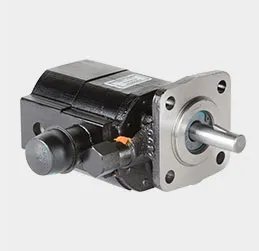draft angle for die casting
Understanding the Importance of Draft Angle in Die Casting
Die casting is a widely used manufacturing process that involves injecting molten metal into a mold to create intricate parts with high precision. One of the critical design considerations in this process is the draft angle. This article explores the significance of draft angle in die casting, its implications on the manufacturing process, and best practices for achieving optimal results.
What is Draft Angle?
The draft angle is the angle provided on the vertical surfaces of a die casting mold. It is typically measured from the vertical line and is essential for facilitating the removal of the cast part from the mold. Without an adequate draft angle, the part may become stuck in the mold, leading to production delays, increased wear on the tooling, and potential damage to the finished product.
Importance of Draft Angle
1. Ease of Part Ejection One of the primary functions of the draft angle is to ensure that the cast part can be easily ejected from the mold. When the part maintains a slight taper rather than a straight vertical form, it reduces friction between the part and the mold walls during removal. This is particularly important for complex geometries where undercuts or intricate features could complicate ejection.
2. Quality of the Finished Product A proper draft angle contributes to the overall quality of the cast part. It helps maintain the dimensional integrity of the part by minimizing distortion during cooling. Without sufficient draft, the part might experience excessive stress, leading to warping or cracking.
3. Tooling Longevity The presence of a draft angle can directly impact the longevity of the die casting tooling. Reducing the force required to eject parts minimizes wear and tear on the mold, thus extending its operational life. Tooling is one of the most significant investments in die casting, so maximizing its lifespan offers considerable cost savings.
4. Reducing Production Time Draft angles can significantly improve cycle times. Parts that come out of the mold smoothly can be processed faster, leading to decreased production times and increased overall productivity. Efficient ejection minimizes downtime in automated systems, which can optimize manufacturing flow.
Optimal Draft Angle Specifications
draft angle for die casting

While the required draft angle can vary depending on the specific design and material, general guidelines suggest a draft angle typically ranging from 1 to 3 degrees for most die castings
. However, some factors may influence the ideal angle- Material Type Certain metals like aluminum, zinc, or magnesium may require different draft angles due to their unique physical properties and cooling behaviors. - Part Complexity Highly complex parts may necessitate greater draft angles to ensure they can be removed without difficulty. Conversely, simpler designs might only require minimal draft. - Surface Finish A smoother surface finish might be easier to achieve with a slightly larger draft angle, as it allows for seamless ejection without scratching or marring the finish.
Best Practices for Implementing Draft Angles
1. Design Consideration During the design phase, it’s essential to account for the draft angle from the outset. Collaborating with engineers who specialize in die casting can help identify the optimal angle for each specific component.
2. Prototyping Utilizing 3D modeling and prototyping can provide insights into how the draft angle affects part removal. Virtual simulations can highlight potential issues before actual manufacturing begins.
3. Conducting Tests Implementing trial runs can be beneficial to determine how well parts are ejected and whether the current draft angles are sufficient. Iterative testing can help fine-tune both angles and design features.
4. Continuous Improvements Gathering feedback from production runs can lead to continuous improvements. Analyzing bottlenecks or issues in part ejection can inform future design modifications for better draft angles.
Conclusion
In summary, the draft angle is a vital aspect of the die casting process that considerably influences part quality, tooling longevity, and production efficiency. By understanding its importance and implementing best practices in design and execution, manufacturers can produce high-quality die castings while optimizing their operations. Proper attention to draft angles not only enhances product performance but also contributes to the overall success of the manufacturing enterprise.
-
Pros & Cons of Sand Casting: Products & ApplicationsNewsAug.19,2025
-
Advanced Crawler Drilling Rig for Confined Spaces-Baoding Hairun Machinery And Equipment Trading Co., Ltd.NewsAug.18,2025
-
Crawler Drilling Rig- Baoding Hairun Machinery And Equipment Trading Co., Ltd.|Pneumatic Power,Frame-Supported DesignNewsAug.18,2025
-
Precision OEM Valve Body Castings for Superior PerformanceNewsAug.18,2025
-
Crawler Mounted Drill Rig - Baoding Hairun Machinery | Underground Drilling SolutionsNewsAug.18,2025
-
Crawler Mounted Drill Rig - Baoding Hairun | Pneumatic Safety, Mining EfficiencyNewsAug.17,2025















